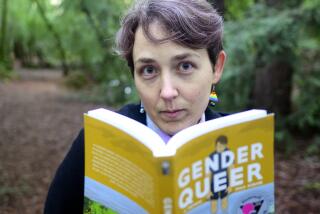An Allegory of Two Ages of Reaction : THE CITY IN THE AUTUMN STARS <i> by Michael Moorcock (Ace Books: $16.95; 344 pp.) </i>
In Michael Moorcock’s “The City in the Autumn Stars,” the remarkable fantasy sequel to “The Warhound and the World’s Pain,” he summons us to take an imaginative journey back in history and rejoin Ritter Manfred von Bek, a noble fighter for the rights of humankind.
The place is Paris. The time is 1794 during the betrayal of the French Revolution by Robespierre and the violent Mob. Fearing decapitation, Bek heads for Mirenburg, Germany, a cultural center, where he intends to fulfill at least some of the goals of the Enlightenment. However, Bek is sidetracked by various conspiratorial characters who challenge his belief in the Age of Reason.
Caught in a maze of conspiracy, Bek tries to uphold the ideals of the Revolution. In the end, however, after losing the enchanting Libussa, Duchess of Crete, and the mysterious Holy Grail, Bek admits in his 1817 chronicles that he cannot radically change the world.
There are remarkable philosophical and political debates throughout Moorcock’s intriguing fantasy that parallel contemporary debates about the human quest to dominate nature, the abuse of power in the name of progress and the meaning of revolution.
By having Bek recall his revolutionary days in 1817, the onset of the reactionary Holy Alliance in Europe, Moorcock, one of England’s most astute writers of science fiction and fantasy, subtly raises questions about the Thatcher/Reagan “unholy alliance” and the “progress” made in the aftermath of the 1960s. Ironically, the further Moorcock transports us from our own times into “The City in the Autumn Stars,” the closer he brings us to the present and compels us with symbolic finesse to realize that the problems of the failed French Revolution are still with us.
More to Read
Sign up for our Book Club newsletter
Get the latest news, events and more from the Los Angeles Times Book Club, and help us get L.A. reading and talking.
You may occasionally receive promotional content from the Los Angeles Times.






